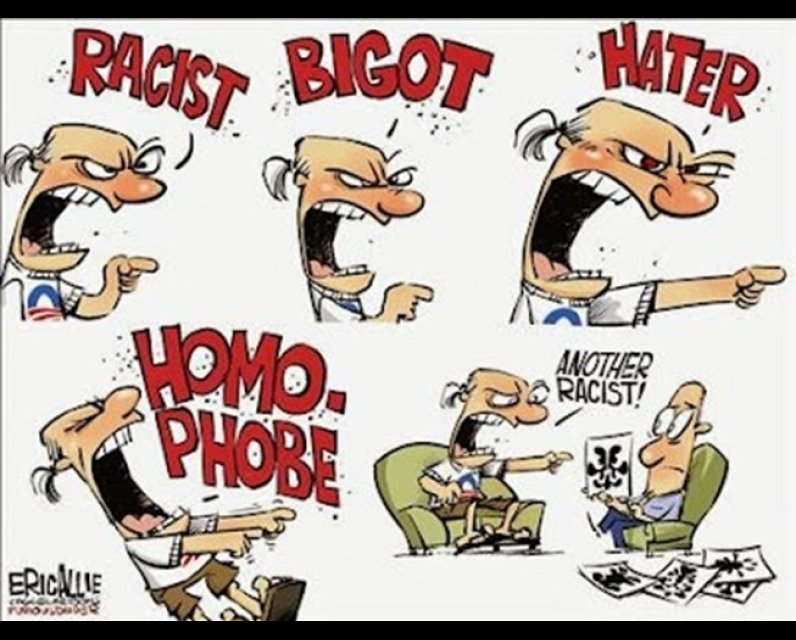Unpublished Opinions
To hate or to defend – which verb applies?

by Robert H. Barrigar, Q.C.
We live in a world divided by beliefs and opinions. Even in our western world, division rules. Brexit. Donald Trump. Geert Wilders. Marie Le Pen. Manifestations of populism? Yes. Of Xenophobia? Perhaps to some extent. Of “Islamophobia” (a word with several meanings)? Again, perhaps to some extent.
But I quarrel with the application of the terms “hate crimes” and “politics of hate” to expressions of disagreement. While most of us fear (or should fear) radical jihadists, and some in Europe are disturbed by the actions of some immigrants, I doubt that few of the rest of us hate Muslims or wish them ill.
It is important to understand that one may deliberately offend without hating. If I say "The Prophet was wrong about child marriage and death for apostasy", this will cause offence to many a Muslim. But it is criticism, not an expression of hate. Unfortunately, many people who do not like to hear or read criticism of cherished beliefs will immediately accuse the critic of hatred for those who hold such beliefs, or of racism, or both. This problem is too often acute in proceedings before human rights tribunals, which fund complainants but not those accused, and are often too quick to transpose criticism and offence into hatred. Margaret Wente in a series of Globe and Mail articles castigated these tribunals.
What has struck me for a long time is that humans have strong tribal instincts. So do lions and monkeys and many other animals. Even ants. So humans, or many of them, wish to preserve and defend the integrity and security of their tribe as objectives of high priority. I use the terms “tribe” and “tribal” expansively to encompass the wide established communities and groups in a nation who share many practices and beliefs in common. And I write this essay primarily from the perspective of the established folks, not from the perspective of newcomers.
To the extent reasonably possible, I recommend discontinuing the use of the terms “hate crimes” and “the politics of hate”, which are emotionally loaded and serve only to confuse and obfuscate the underlying issues. I suggest displacement of these and similar terms by - - tribal defence - - or if that term troubles you, - - community defence - -. Hate is outwardly directed toward those who are hated and is frequently irrational. Fears and responses to threats are inner, and prompt protective measures, not outwardly directed aggression, with the proviso that if a perceived threat is severe, countermeasures may be commensurately severe. Defence protects against threats and alleviates fears. Defence is not prompted by hate but is a rational response to an external threat.
Instead of trying to discern and define precisely what is meant by the politics of hate or trying to apply that concept to current social and political issues, we may apply the concept of tribal defence (or “community defence”), which concept I submit is more readily applicable to incidents prompting concerns about existing or latent threats, and encourages us to think rationally about the underlying issues.
Tribal threats and fears evolve. In earlier times, they existed in relatively small “tribes”. In 1946, when I was a small boy, my parents and their children moved from the Ottawa Valley to the St. John River Valley. In the Ottawa Valley there were at the time divisive tribal manifestations, e.g. “Catholics, catholics, ring the bell; protestants, protestants, go to hell”. Nothing too serious, words not deeds. Constructive members of the community worked to bridge the gaps. When we moved to New Brunswick, some in our community regarded us “Upper Canada newcomers” somewhat suspiciously, but with time and experience, we became accepted. Today, tribal divisions are probably more apparent on the internet than by residence, and the tribes tend to be larger. Further, threats tend to be more widespread and diffuse than in earlier eras.
Once upon a time, national “tribes” relied upon discrete subconstituents to achieve integrity and security of the tribe. These subconstituents comprised organized military, religious, political and educational groups, and sometimes other groups, such as nobles and aristocrats. While residual subconstituents of the foregoing sort continue to exist today, they have been undermined to a great extent by fundamental changes. In our advanced western societies, the influence of religions is in decline. Our military has been trained to fight an identifiable external enemy military, but not subversive groups within our own societies. Political and educational institutions face difficulties in identifying and remedying the underlying causes of social problems. These difficulties have been exacerbated by extensive and immediate digital communication – the “crowdsourcing” and “crowdfunding” concepts can be readily adapted to apply to political initiatives.
The politics of tribal fears subdivides into the politics of discomfort and the politics of serious fear. Discomfort arises when our traditional tribal values and practices are at risk of rejection and replacement by new and unfamiliar values and practices, especially when such discomfort is exacerbated by an influx of strangers, as happens with immigration. Serious fear arises when our security is threatened – we see ourselves, families and friendsthreatened by extreme manifestations of those new and unfamiliar values and practices. Both serious fear and discomfort are corollaries of our innate urge to protect tribal values and objectives.
The threats causing serious fear or discomfort are frequently reinforced by negative treatment of proponents of new and unfamiliar values and practices. If we do not accept and take measures to welcome immigrants into our community, they may invoke their own traditional tribal values and practices and treat us as quasi-enemies.
Proponents of multiculturalism wish to promote assimilation of immigrants into the wider community, and to that end are often reluctant to acknowledge negative aspects of immigrants’ values and practices, because alienated immigrants are unlikely to assimilate readily. But such reluctance can breed distrust of the proponents on the part of many members of the established community. What can be done?
Time, patience, education. It is unrealistic to expect either immigrants or the established community to reach all needed accommodations quickly. Education can be a highly useful tool to remove misunderstandings and to show paths of enlightenment both to the established and the newcomers. However, education as practised is not perfect, as many a student protest reveals. If education is reinforced by constructive social practices and political decisions, such as finding suitable employment for immigrants as quickly asreasonably possible, and establishing community venues and events that will appeal to both the newcomers and the established residents, then positive results may be anticipated.
But what if the traditional values and practices of the newcomers differ drastically from those of the established folks, and prompt or reinforce not merely verbal taunts and disparagement but also threats of injury or even death to dissidents? And, what if from time to time such treats translate into action? And what if this situation persists and seems to be unlikely to be alleviated within the foreseeable future?
In many cases in recent experience, the threats of a few extremists are treated precisely for what they are, and do not transpose into a fear of a larger group of newcomers or “strangers” in some sense. We may continue to interact well with our newcomer neighbours, and treat those few extremists having not only a threatening agenda but also practices and values in common with our neighbours as statistically insignificant. But our perspective may change. For example, the Islamic State has been known to publish on the internet lists of citizens of western countries whom it identifies as targets to be killed in the indefinite future. What if one of our friends is on that list?
And what if the reason alleged for the targeting is non-compliance with a value held in common by the Islamic State and our newcomer neighbours next door? And what if over time the number of extremists in a given locale increases drastically?
These questions do not admit of easy answers, partly because in many instances, it is difficult to assess to what extent values and practices are shared between various groups. For example, it would be a mistake to presume that an Islamic value or practice that may appear to be supported by the Prophet or the Koran is supported by all subgroups of Muslims. One need only refer to the values and the practices of the Alawite or Ismaili branches of Islam to conclude this. Recall that former Prime Minister Harper welcomed the Aga Khan, leader of the Ismailis, to Toronto in 2014 to open there the first museum in North America devoted to Islamic art.
However, I submit that when we examine questions such as the foregoing, we do not do so in an atmosphere of hate for Muslims generally nor for any identifiable Muslim who has done us no harm and threatens us with no harm. We do so in an atmosphere of concern for the preservation of our values and practices and of the security of ourselves and others in our community. Even if a particular Muslim threatens us, our reaction is highly likely to be one of defence, not of outwardly directed hatred, and certainly not one of hatred toward the Muslim community.
So, if your friend is highly critical of Islam and its adherents, please do not characterize your friend’s attitude as one of hate – the criticism is likely to be a result of tribal defence to a perceived tribal fear or threat.



Comments
Be the first to comment